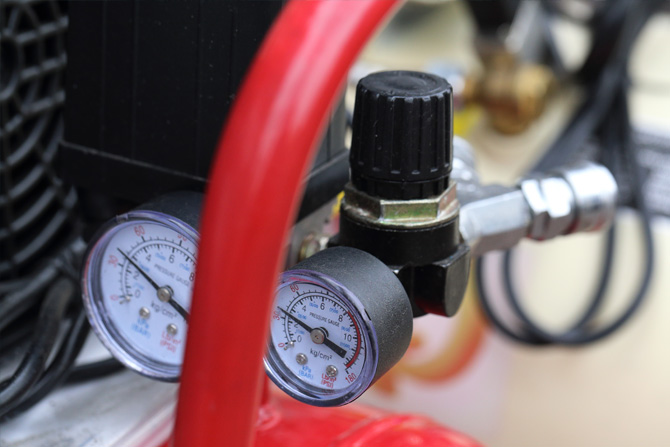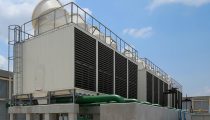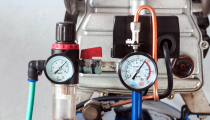A steady supply of oil-free and contamination-free compressed air is…

How to improve system efficiency using compressed air storage?
In today’s market, maintaining a competitive edge is very important for any business. As a result, improving manufacturing efficiency and reliability have become a primary need across industries. Frequent monitoring, energy audits are some of the major necessities to check the function of compressed air systems. However, manufacturers often misjudge the capability of compressed air storage in increasing efficiency of the entire system. Proper storage facilities help save on energy bills too. In reality, compressed air storage can be used as an efficiency improving tool, if applied properly. It makes the system achieve efficiency and deliver the desired results.
Compressed air storage when regulated at a higher pressure, more than the capacity of the plant, allows a large amount of mass air flow into the system at an increased rate. When the demand is high in plants, this process allows a compressed air system to reduce the reaction time and deliver an improved output in favour of high volume manufacturing. This method is much helpful in lowering operational and maintenance costs.
Myths and Facts related to Compressed Air Storage
Here are some aspects related to compressed air storage that are often misunderstood by the manufacturers. To share a clear idea, facts are introduced associated with air storage and its method of application.
#1 Myth: Adding storage tanks will create effective compressed air storage
Installing an air receiver along with a compressed air system would not be ideal if the manufacturers are not sure about the purpose. As a result, achieving a desired outcome becomes difficult. Manufacturers face issues mostly with poorly designed compressed air storage facilities. Although, it does not affect the process directly, yet it is definitely an obstacle in the path of improving efficiency.
Fact: Measure supply and demand before designing storage system
In order to create effective compressed air storage, measuring performance characteristics of a particular system is of utmost importance. Both the demand and supply side should be mapped before taking the decision of installing additional storage volume. Without proper assessment and a useful differential, installing an air receiver is not a good idea. Without prior assessment, such installation creates little storage space consuming more energy.
#2 Myth: System piping is an alternative for air receivers
System piping that includes headers, sub-headers and drop legs, is not capable of creating effective storage, while air receivers are far more cost effective and storage friendly. Creating a meaningful pressure differential across system piping is troublesome depending only on natural pressure drop.
Fact: Air receivers with proper demand regulation maximise storage
Air receivers, if coupled with demand regulation, are capable of creating maximum storage simultaneously with greater pressure differential.
#3 Myth: Creating more compressed air storage is always better
This statement is not completely false as excessive compressed air storage is bad for the operation only sometimes. The advantage is that pressure fluctuations can be controlled if excessive storage space is available in a system. Improved reaction time in the supply side as a response to demand side requirements helps to control it too. As far as saving energy is concerned, manufacturing costs might increase as a result of the downside to oversizing storage in a system. Besides, payback period gets delayed and the project might demand more investment and time.
Fact: Storage must be created only after measuring the performance characteristics
As mentioned, measuring or verifying performance characteristics is always a smart choice to make, if manufacturers are eyeing on benefits. A quality compressed air system audit would be the best to receive better returns on investments.
#4 Myth: All air compressors do not require effective storage
Storage requirements of compressor controls and compressed air systems are two different things. While measuring the needs of compressor control, it has been observed that not all controls require the same storage. While operating a system at high-load levels, some of the compressor controls like variable speed and displacement or modulation get very minimal benefit from wet storage. On the contrary, control storage cannot help but short cycling if operated at lower loads.
Fact: Both compressor control and air compressor require storage
Compressor controls need wet storage irrespective of higher or lower load. Reducing possibility of excessive oil carryover and short cycling is likely to increase efficiency of an entire operational unit. The type of compressor control and air compressor should definitely be of separate concerns.
Significance of air storage
A system can only be called efficient when there is properly sized and applied storage. To choose a suitable storage for the air compressor, a plant must go through an in-depth audit. Starting with the right assessment is ideal to determine improved efficiency of the system.
To know more about air compressors and air storage, visit us at: zentechsystems




